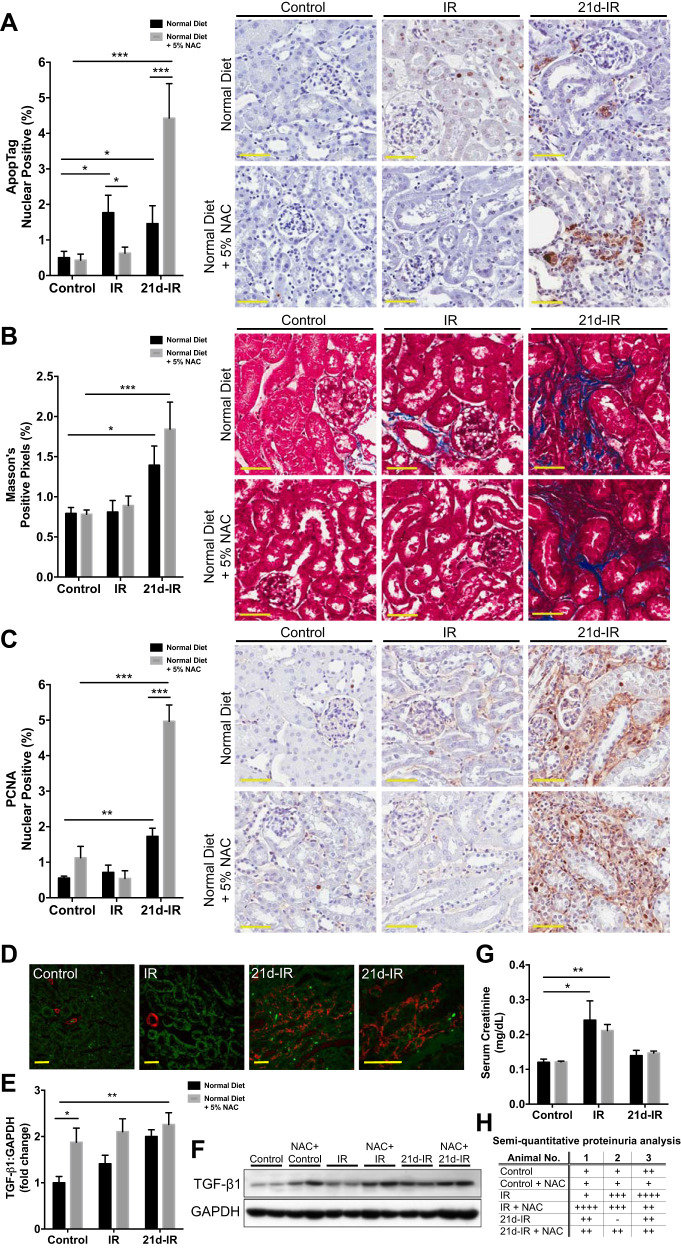Fig. 1.
Maladaptive repair following acute kidney injury (AKI) is enhanced by the antioxidant N-acetyl-cysteine (NAC). Groups of mice were the following: untreated controls (control); 20-min bilateral renal ischemia with 40-min reperfusion [early ischemia-reperfusion (IR)]; and IR injury with 21-days reperfusion (21d-IR). Groups were given normal diet or normal diet + 5% NAC. Acute and long-term outcomes of apoptosis and fibrosis and kidney function are demonstrated. A: the enzymatic in situ stain ApopTag was used to identify and quantify apoptosis. Apoptosis significantly increased in tubular epithelial cells at IR and 21d-IR in mice on a normal diet. The 5% NAC diet prevented tubular cell apoptosis at IR but significantly enhanced apoptosis at 21d-IR compared with mice on a normal diet. B: Masson’s trichrome staining and morphometry demonstrated increased interstitial collagen deposition at 21d-IR compared with healthy controls and early IR for both normal diet and 5% NAC diet. C: progressive fibrosis was also evident at 21d-IR via increased interstitial cell proliferation (using proliferating cell nuclear antibody/PCNA labeling and quantification by morphometry) that was significantly enhanced by NAC. D: immunofluorescence was used to confirm interstitial cells expressing α-smooth muscle actin, a marker of myofibroblasts, in 21d-IR mice compared with control and IR animals on a normal diet (red, αSMA; green, autofluorescence). Regardless of IR duration, NAC in diet significantly increased profibrotic transforming growth factor-β1 (TGF-β1) expression, detected by Western immunoblotting (E) and quantified by densitometry (F). Kidney functional changes verified induction of AKI (serum creatinine/SCr) (G) and proteinuria by semiquantitative dipstick analysis (H) significantly increased at 40-min reperfusion, but function returned to control levels at 21d-IR regardless of diet. Results are expressed as means ± SE (n = 4–6 animals per group; *P < 0.05, **P < 0.01, ***P < 0.001 compared as indicated). Scale bar represents 50 µm.

